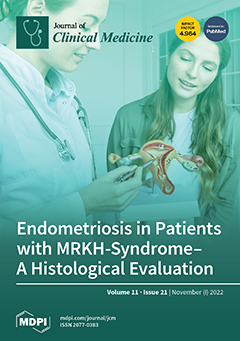Background: Concurrent acute cholecystitis and acute cholangitis is a unique clinical situation. We tried to investigate the optimal timing of cholecystectomy after adequate biliary drainage under this condition.
Methods: From January 2012 to November 2017, we retrospectively screened all in-hospitalized patients
[...] Read more.
Background: Concurrent acute cholecystitis and acute cholangitis is a unique clinical situation. We tried to investigate the optimal timing of cholecystectomy after adequate biliary drainage under this condition.
Methods: From January 2012 to November 2017, we retrospectively screened all in-hospitalized patients undergoing endoscopic retrograde cholangiopancreatography (ERCP) and then identified patients with concurrent acute cholecystitis and acute cholangitis from the cohort. The selected patients were stratified into two groups: one-stage intervention (OSI) group (intended laparoscopic cholecystectomy at the same hospitalization) vs. two-stage intervention (TSI) group (interval intended laparoscopic cholecystectomy). Interrogated outcomes included recurrent biliary events, length of hospitalization, and surgical outcomes.
Results: There were 147 patients ultimately enrolled for analysis (OSI vs. TSI, 96 vs. 51). Regarding surgical outcomes, there was no significant difference between the OSI group and TSI group, including intraoperative blood transfusion (1.0% vs. 2.0%,
p = 1.000), conversion to open procedure (3.1% vs. 7.8%,
p = 0.236), postoperative complication (6.3% vs. 11.8%,
p = 0.342), operation time (118.0 min vs. 125.8 min,
p = 0.869), and postoperative days until discharge (3.37 days vs. 4.02 days,
p = 0.643). In the RBE analysis, the OSI group presented a significantly lower incidence of overall RBE (5.2% vs. 41.2%,
p < 0.001) than the TSI group.
Conclusions: Patients with an initial diagnosis of concurrent acute cholecystitis and cholangitis undergoing cholecystectomy after ERCP drainage during the same hospitalization period may receive some benefit in terms of clinical outcomes.
Full article






